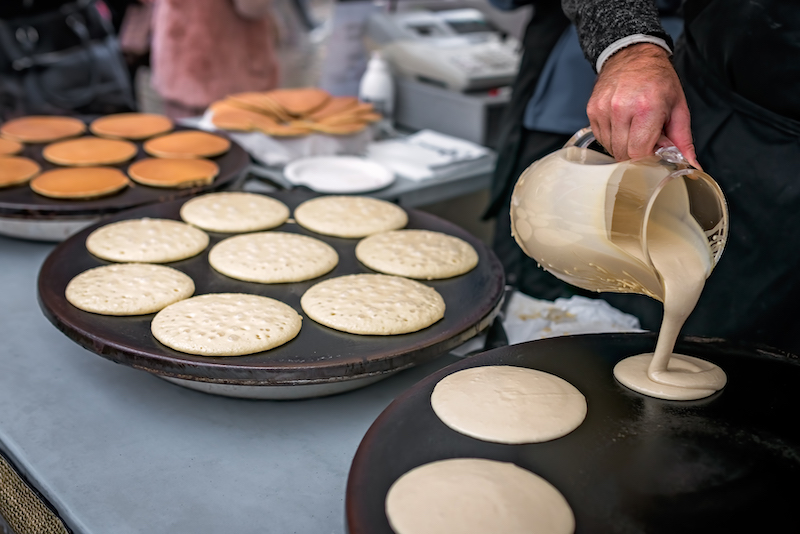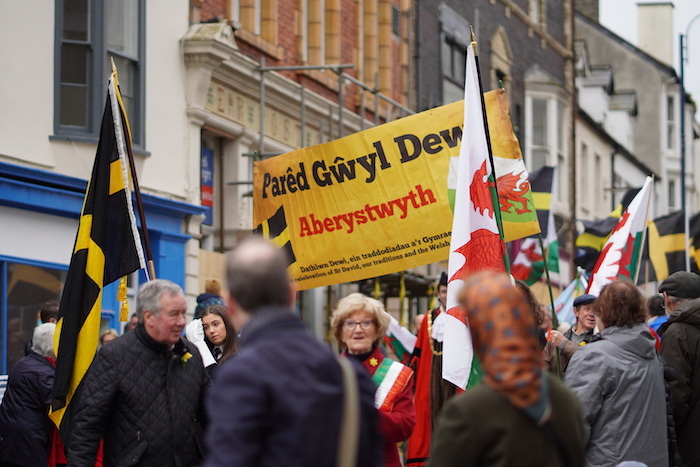Today’s Welsh word of the day is Mawrth, a proper noun which can refer to either Tuesday, or the month of March.
Mawrth
Tuesday / March / Mars
Mawrth was borrowed in from the Latin Martius, and all of the Celtic languages have a similar word, like the Breton Meurzh and the Irish Gaelic Máirt.
Martius was an adjective that could refer to god of war, Mars, and to anything that was associated with him, including the planet Mars and the month of March. Indeed, the planet Mars in modern Welsh is also Mawrth or y blaned Mawrth.
English retains this association in the word March itself. Though it doesn’t for Tuesday, other European languages do, like French, which calls it mardi (literally: the day of Mars).
Mawrth is standard across Wales, although colloquially in parts of the South you might hear this alternative pronunciation:
Normally, Mawrth is used in the phrases dydd Mawrth (Tuesday), and mis Mawrth (March), although it can be heard on its own, too.
In some cases, it’s up to you whether you include the preceding word – for example, ym mis Mawrth and ym Mawrth are both equally valid to mean in March. The former is a bit more formal, but it’s what I would gravitate towards. What’s more common may vary regionally.
It’s a masculine, proper noun, and it’s susceptible only to the soft mutation.
Soft mutation
Fawrth
Nasal mutation
N/A
Aspirate mutation
N/A
It’s easier to understand Mawrth (and other days of the week) if you think of it as meaning Tues rather than Tuesday. This is why we usually say dydd Mawrth rather than just Mawrth on its own.
However, thinking about it this way still produces differences to the English equivalent. In English, when we refer to different times of the day on a particular weekday, we say Tuesday night or Thursday morning, for example. The same isn’t true in Welsh. Tuesday night is basically rendered as Tuesnight (!) which is nos Fawrth.
For other times of the day, you actually can include the dydd, but you still don’t have to – so either bore dydd Mawrth or just bore Mawrth are fine to mean Tuesday morning. And prynhawn Mawrth or prynhawn dydd Mawrth are both good translations of Tuesday afternoon.
Nos is the only example where you absolutely cannot include the dydd. It’s either Tuesday or Tuesnight, it’s never Tuesday night, which sounds clunky in Welsh.

Es i adre ddydd Mawrth.
I went home on Tuesday.
It can be hard in Welsh to tell the difference between talking about something that happens on Tuesday and something that happens on Tuesdays generally. Historically, both could be translated as either ar ddydd Mawrth or just ddydd Mawrth. (In the latter case, the ar is still implied, which is why there should technically be a mutation, although some speakers have started omitting it.)
However, in modern spoken Welsh, the form with the dropped ar is usually used to indicate we are talking about a specific Tuesday. You can also specifically say bob dydd Mawrth (every Tuesday) to talk about things that happen on Tuesdays generally.
And of course, everyone’s favourite dydd Mawrth in the year is Dydd Mawrth Ynyd (Shrove Tuesday), sometimes just called Dydd Mawrth Crempog (Pancake Tuesday).
Dw i’n edrych ymlaen at Ddydd Mawrth Ynyd.
I’m looking forward to Shrove Tuesday.

Things are a bit more relaxed grammatically when it comes to mis Mawrth. As I mentioned, you can often drop the mis in this case, but whether or not it’s better to depends on the context.
Ostensibly, the reason we include mis before month names in Welsh is so that they’re not confused with other meanings they may have. For example, hydref means autumn but mis Hydref means specifically October. The same is true for Mawrth given that it can also mean Tuesday or Mars, so if what you’re talking about isn’t clear from context, err on the safe side and include the mis.
One clear example of when it’s obvious you’re referring to the month is when you’re mentioning a specific date, in which case you can omit mis. For example, the tenth of March would be y degfed o Fawrth.
Be ‘nawn ni ar y pymthegfed o Fawrth?
What shall we do on the fifteenth of March?
Y gwanwyn (springtime) is a lovely time of year in Wales generally, when everything begins to get greener, ŵyn (lambs) are to be seen in the fields, and the national flower cennin Pedr (daffodils) begin to surface. This, even though the Welsh often complain about Mawrth, aml ei dywydd (the many weathers of March)!
Arguably mis Mawrth is the most important Welsh month of all, as it’s when we celebrate Dewi Sant (Saint David), the patron saint of Wales.
Dewi Sant was reputed as a generous and selfless person, as recorded in the children’s song Mis Mawrth Unwaith Eto (It’s March Again), where he’s described as ffrind y bobl, ffrind y plant (friend of the people, friend of the children).
Today, Dydd Gŵyl Dewi (Saint David’s Day) is not exclusively a religious holiday by any means – it’s more a time to celebrate Welsh national pride. Many people even in the more Anglicised parts of Wales celebrate by eating pice bach (Welshcakes) and wearing cennin Pedr (also called blodau Mawrth, March flowers). Larger cities and towns usually organise a parade.
There’s strong support throughout Wales for Dydd Gŵyl Dewi to be made an official bank holiday to recognise its importance. In 2022, Gwynedd became the first Welsh local authority to do so. Let’s keep our fingers crossed that more counties follow suit to show respect to this important Welsh tradition.


